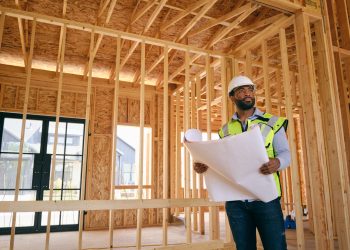Sales of new single-family houses in June 2025 were at a seasonally adjusted annual rate of 627,000, according to estimates released jointly on July 24 by the U.S. Census Bureau and the Department of Housing and Urban Development. This is 0.6% above the May 2025 rate of 623,000, and is 6.6% below the June 2024 rate of 671,000.
The seasonally adjusted estimate of new houses for sale at the end of June 2025 was 511,000. This is 1.2% above the May 2025 estimate of 505,000, and is 8.5% above the June 2024 estimate of 471,000.
This represents a supply of 9.8 months at the current sales rate. The months’ supply is 1% above the May 2025 estimate of 9.7 months, and is 16.7% above the June 2024 estimate of 8.4 months.
The median sales price of new houses sold in June 2025 was $401,800. This is 4.9% below the May 2025 price of $422,700, and is 2.9% below the June 2024 price of $414,000. The average sales price of new houses sold in June 2025 was $501,000. This is 2% below the May 2025 price of $511,500, and is 1.1% above the June 2024 price of $495,500.
“New-home sales continued to be slow in June,” said Bright MLS Chief Economist Lisa Sturtevant. “New-home inventory continued to increase as buyer traffic has slowed. At the end of June, the supply of new single-family homes was the highest level since November 2022, up from 8.4 months of supply last June.
“It is a very different housing market than it was just a year ago. Combined new and existing home inventory is now over 2 million, compared to less than 500,000 a year ago. The combined new and existing inventory is also significantly higher than it was before the pandemic. More supply has meant less pressure on home prices. New-home prices have declined year-over-year for five out of the past six months. The median sold price of a new home was 7.7% lower than the price of an existing home last month. This is a marked change from during the height of the pandemic when new homes were selling for 15% to 20% more than existing homes.
“Builders are facing a very different economic climate in 2025. Year-to-date, new-home sales are tracking far below last year’s level, and there is nothing to suggest a rebound in the new-home sales market in the second half of 2025. New single-family construction is lower than a year ago and mortgage rates are stubbornly stuck in the high 6% range. At the same time, buyers who remain in the market have more choices as the inventory of existing homes continues to increase.”
Buddy Hughes, chairman of the National Association of Home Builders (NAHB) and a homebuilder and developer from Lexington, North Carolina, added that “elevated mortgage rates and sustained price levels continue to limit purchasing power, particularly among first-time and middle-income buyers.”
Realtor.com Senior Economist Joel Berner commented on region specifics.
“Regionally, the Northeast (-27.6% month-over-month; -34.4% year-over-year) and West (-8.4%; -14.4%) had the largest retreats in new-home sales, while the South held mostly steady (+5.1%; -4.4%) and the Midwest actually picked up (+6.3%; +9%),” he said. “The Northeastern downturn is a bit surprising, as that region is the most supply-constrained and has seen the strongest price growth in the housing market at large. The gross volume of new-home sales in the Northeast is so small that the data trends tend to be noisy. The Midwest is the next most supply-constrained region, so the improvement in new-home sales there is an encouraging development.”











